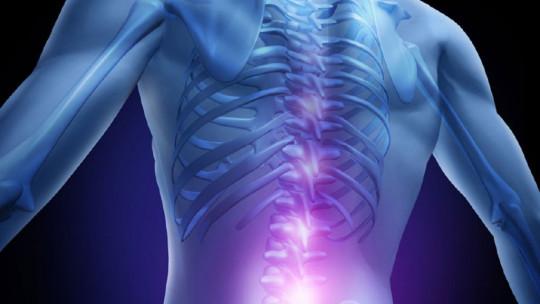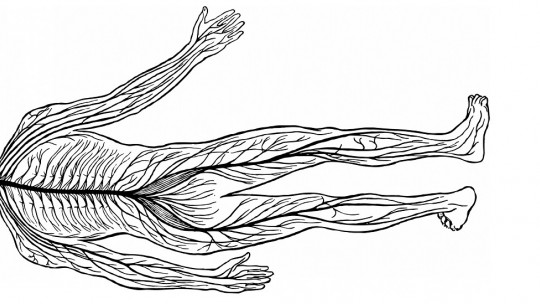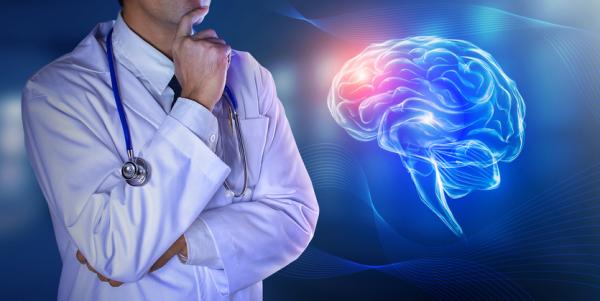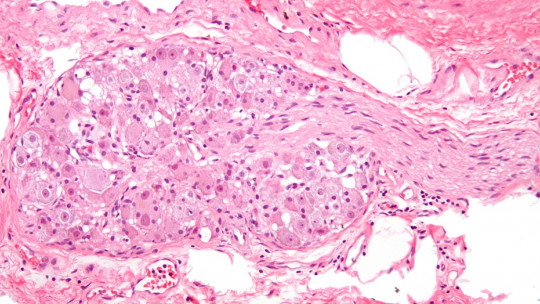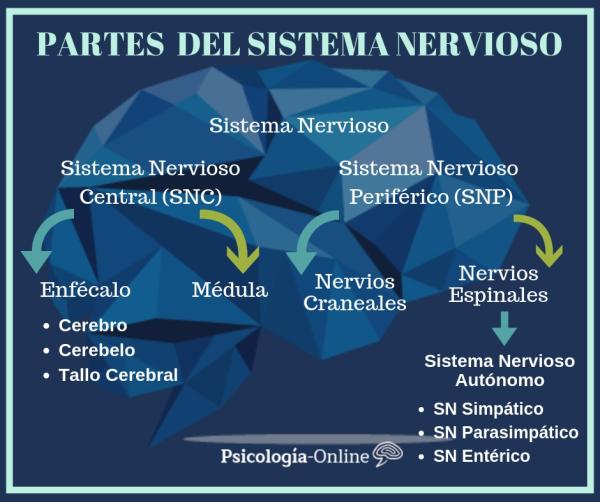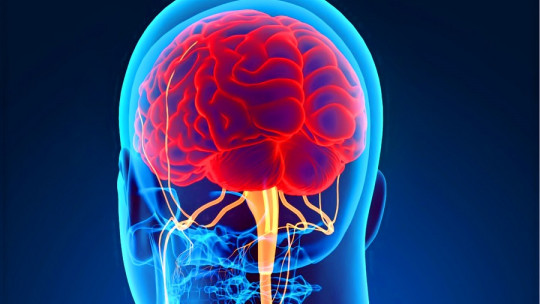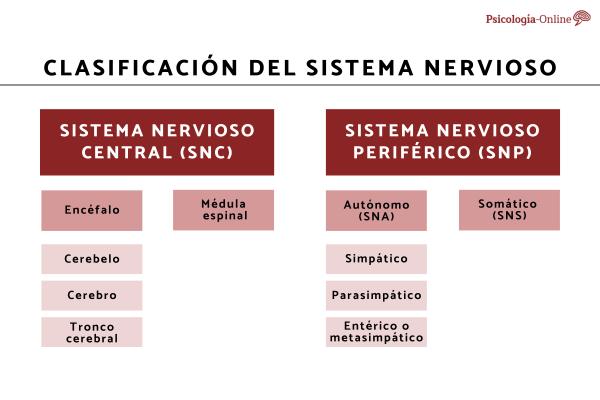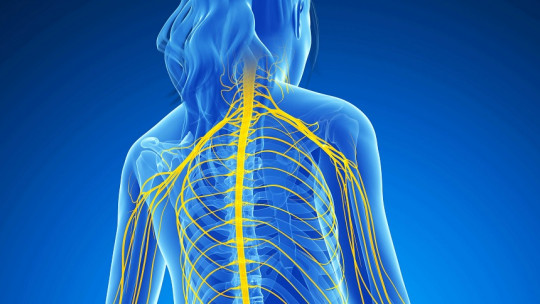When we think about the nervous system we tend to think almost exclusively about the brain.
Focusing on this organ is logical due to its special relevance, but it is often forgotten that the nervous system is precisely a system, that is, a set of interrelated elements. In other words, not everything is the brain. What’s more, within the nervous system there are two major divisions, the central nervous system and the autonomic nervous system.
In addition to the king organ, in the central nervous system we can also find another large component: the spinal cord, through which most of the body’s innervations pass
What is the spinal cord?
The spinal cord is the most caudal part of the central nervous system, starting in the medulla oblongata and ending in the lumbar area.
This is the lower part of the neuroaxis, with a slightly flattened and asymmetrical cylindrical shape that, like the brain, is strongly protected as it is surrounded by the spinal column. Likewise, it also enjoys the protection of the meninges and cerebrospinal fluid, which prevent most of the damage caused by the elements of the environment.
In a certain sense, it is a part of the nervous system that is not completely anatomically separated from the brain, but many of the elements that intervene in the latter work at the same time in the spinal cord. In any case, it is possible to identify the beginning of this structure just below the brain stem.
This part of the nervous system is the connection point between the brain and the rest of the body , passing the vast majority of nerve fibers through the spinal cord. The transmission of information does not generally occur through a single neuron, but as a general rule, the neurons that make up the different nerves of the body make one or several intermediate synapses, either within the spinal cord itself or outside it (such as with the neurons of the nervous ganglia).
The spinal cord receives both afferents and efferents that is, it has both neurons that receive information from the receptors of the different organs and structures and others that send information and orders to said areas.
On the other hand, it must be taken into account that the spinal cord is not simply a type of conduit through which nerves from all parts of the body travel towards the brain and vice versa; Its composition and functions are more complex than they seem, and it is even possible to find similar elements between this part of the nervous system and the brain. For example, in both structures we find an envelope of meninges, cerebrospinal fluid and a differentiation between white matter and gray matter.
Neuroanatomical configuration
Although the division into vertebrae has more to do with the configuration of the spinal column, that is, the bony protection of the spinal cord that in turn serves as a supporter of the body position, it can be useful to take it into consideration to locate the situation of the parts of the spinal cord that innervate the different areas of the body.
Most human beings are born with a total of 33 vertebrae , counting among them seven cervical vertebrae, twelve thoracic, five lumbar, five sacral and four coccygeal. As we develop, the number is reduced as the lower ones merge to form the sacral and coccygeal bones, only the first 24 being considered vertebrae, ending in L5 or lumbar 5. The beginning of the spinal cord is located a little earlier. of its covering by the vertebral column, being attached to the medulla oblongata. The point where the spinal cord ends can vary from one person to another, generally ending between the L1 and L3 vertebrae.
In general, the nerve connections of the spinal cord correspond to the area where they are located. Thus, in the part of the spinal cord located between the thoracic vertebrae are the nerve connections that innervate the thorax, and so on. Regarding the nerves that connect with the spinal cord, we have a total of thirty-one pairs, eight being cervical, twelve thoracic, five lumbar, five sacral and one coccygeal. A point to highlight is the presence of two areas in which the spinal cord is somewhat wider, because in these areas the nervous connections with the extremities are found.
Between the C4 and T1 vertebrae there is an area somewhat wider than the rest of the spinal cord. This area, known as cervical intumescence, is thicker because the nerve connections that connect with the upper extremities are located in this place.
Towards the lower end of the cord, a thickening can be observed, between the T11 and L1 vertebrae, called lumbosacral intumescence. This is the part of the spinal cord that innervates the lower extremities, and which, together with the so-called cauda equina, connects with the parts of the body located at the lower end.
Regarding the just mentioned horse’s tail, which receives its name due to the similarity of its shape with the tail of said animal, it is the set of nerve fibers that connect with the spinal nerves. This shape is due to the fact that the spinal cord is shorter than the vertebral column, so the areas below the lumbar area must project their nerve endings to the spinal nerves located below it.
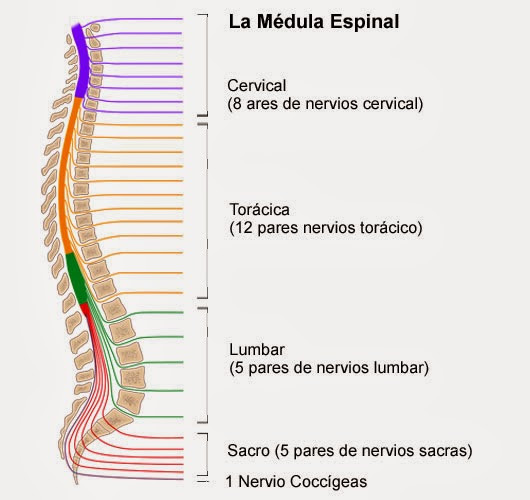
Parts of the spinal cord
It has been observed that the spinal cord has different nerve connections that innervate different areas of the body. However, it may be of interest to analyze the internal structure of the spinal cord.
Just like in the brain, In the spinal cord we find both gray matter and white matter However, the arrangement is reversed, with the white matter located in an external position and the gray matter in the internal part of the cord. Generally, the transmission of information occurs ipsilaterally, that is, the right side of the body is treated by the left part of the spinal cord while the left side is treated by the right part.
Gray matter
The gray matter has this coloration because it is a set of somata or nuclei of neurons, which project their axons to other areas. That is, it is in these areas where the bodies of neurons, information processing centers, accumulate (although since they are not in the brain, this processing is very superficial).
The gray matter is structured into different horns or horns, the main ones being the ventral horn, the dorsal horn and the intermediate area. There is also the lateral horn, but only in the thoracic area and the beginning of the lumbar area.
The dorsal horn is responsible for receiving information from the systems innervated by the spinal cord In other words, it is the part of the spinal cord that is responsible for ensuring that the external or internal stimulation detected by the receptors can be sent to the brain.
The ventral horn of the spinal cord, unlike the dorsal horn, has as its main function to emit information to the nerves, causing the organism to react to external or internal stimuli. Through it voluntary movement is exercised.
Regarding the intermediate zone, there are many interneurons, which are those whose main function is to serve as a link between two other neurons. They are connecting bridges between distal areas.
Although it only appears in the thoracic and part of the lumbar area, the lateral horn is of great importance, innervating different structures and participating in the sympathetic and parasympathetic systems of the autonomic nervous system. In this sense, it plays a fundamental role in homeostasis, the process by which the body establishes a balance or harmony between different areas of the body so that the set of organs functions in a healthy and coordinated way.
White substance
The white matter is formed mainly by the axons of neurons, interconnecting the spinal cord and brain It is organized into different fibers that are named after the areas with which they connect, and can be ascending or descending. Furthermore, this grouping of neuron projections is visible to the naked eye, primarily due to the contrast between its paler color compared to the parts of the nervous system around it (hence the name “white matter”).
Three columns can be found in the medulla, the dorsal, the lateral and the ventral, and they are seen without the need for a microscope. The dorsal column is mainly formed by somatic afferent fibers. In other words, as occurs with the dorsal horn in the gray matter, they are responsible for transmitting sensory information from the brain to the spinal cord and vice versa depending on whether it is ascending or descending.
The ventral and lateral columns are tracts and fascicles, which tend to be efferent transporting the motor commands given by the brain, so they go “from top to bottom.”
Thus, in general the distribution of the white matter and the gray matter of the spinal cord is inverted with respect to what happens in the brain: while in the latter the white matter predominates in the interior and the gray matter predominates in the more superficial layers, here it is the other way around.
Spinal cord functions
The importance of this part of the central nervous system is beyond doubt. You only need to observe the effects that damage has on this area to understand that it is a fundamental section for normal functioning. And the spinal cord is more than the channel through which the brain communicates with the rest of the body; It can also carry out certain automated activities, such as reflex arcs (in which very little time passes between the capture of a stimulus and the emission of a motor reaction, since this process does not go through the brain, as we will see).
In summary, The main functions that make this section of the nervous system so relevant are the following
1. Transmission of sensory and motor information
The spinal cord is the relay nucleus for neurons and nerve fibers present in most of the body. This means that both when the brain gives the order to perform an action (for example kicking a ball) and when a part of our body perceives some stimulus (a caress on the arm), The information passes first to the spinal cord, which will send the information to the muscles or the brain to process it.
Thus, the spinal cord acts as an elevator for afferent information and efferent information.
2. Information processing
Although it is in the brain where the stimulation becomes conscious, the spinal cord makes a quick judgment of the situation in order to determine whether to only send the information to the brain or provoke emergency action before it even arrives.
Thus, in relation to mental processes, it allows the appearance of a type of shortcuts in which the information does not have to wait to be processed by higher authorities to generate a response.
3. Immediate reaction: reflexes
As we have just seen, sometimes the spinal cord produces an action by itself without the information having yet been transmitted to the brain. These actions are what we know as reflections. To illustrate, we can think of accidentally putting a hand on the fire: the hand is removed immediately, unplanned and without the information having yet passed to the brain.
The function of reflections is clear: to offer a quick reaction to potentially dangerous situations As the sensory information already produces a response when it reaches the spinal cord, without having to wait for it to be captured by the brain, time is saved, something very valuable in the event of an animal attack or when one may receive injuries due to a fall or a collision. Burns. In this way, programmed actions are carried out in the design of the spinal cord, and they are always executed in the same way.
These types of functions fit with the logic with which the nervous system in general (and, consequently, also the spinal cord) is governed: many times, speed is more important than precision or considerations about whether performing a certain action fits. or not with social norms. The time we save with this can save us a lot of problems when our physical integrity is at stake.
However, in the case of babies there are also reflexes that are lost during the first months after birth and whose basic function is not always to react quickly, but to perform acts that favor survival, such as sucking breast milk. In this case we are talking about primitive reflexes, the absence of which can be a sign of illness.

